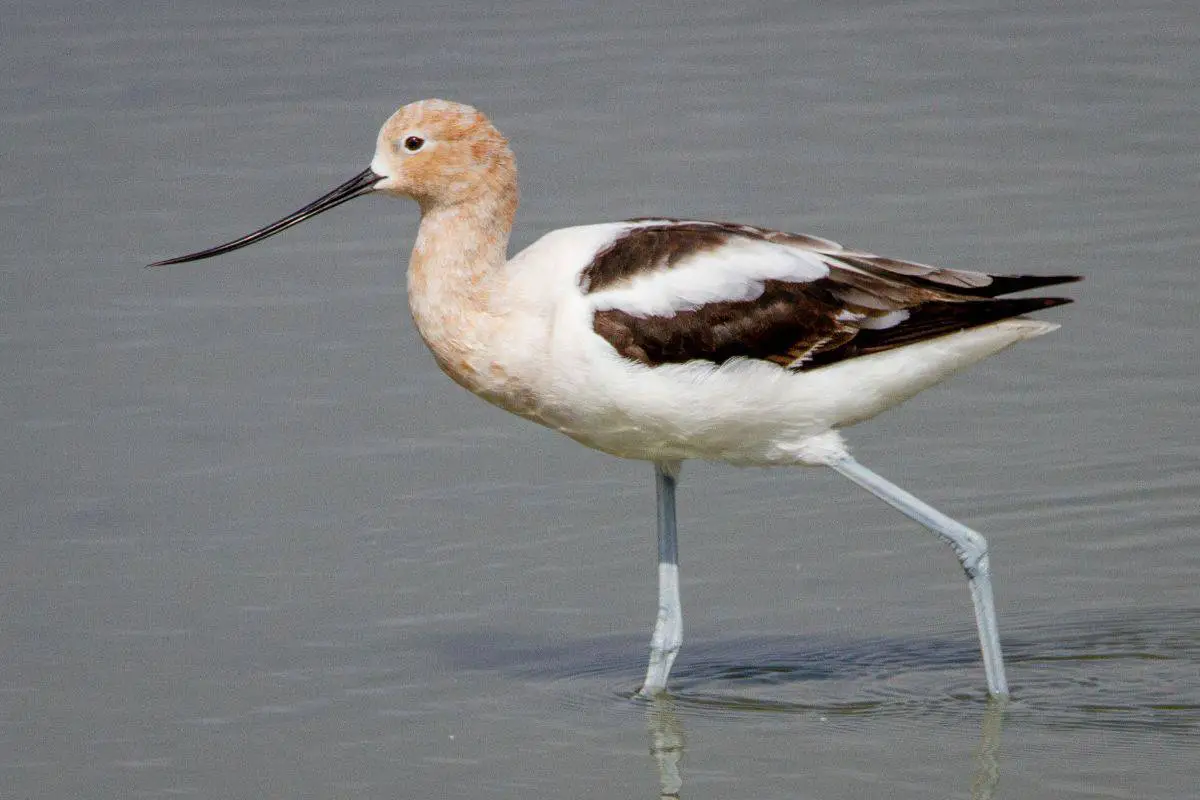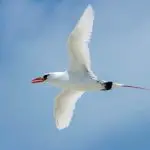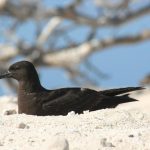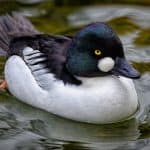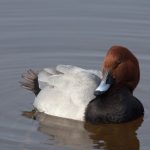Common Name: American Avocet
Scientific Name: Recurvirostra americana| Size | Diet | Range in Hawaii | Status in Hawaii |
|---|---|---|---|
| 16 in. - 20 in. | insects, crustaceans, and small mollusks | Maui | Least Concern |
The American Avocet (Recurvirostra americana) is a striking bird with a unique and elegant appearance. With its slender, upturned bill and black-and-white body, this long-legged wader is a sight to behold. While this species is typically found in North America, it has been known to make appearances in other parts of the world, including Hawaii.
According to the Hawaii Biological Survey, the American Avocet is a non-breeding visitor and vagrant in Hawaii, and has been spotted on the island of Maui. Despite its occasional presence in Hawaii, the American Avocet remains a fascinating bird species that continues to capture the attention of bird enthusiasts and nature lovers alike.
In this article, we’ll discuss the American Avocet in more detail, including its physical characteristics, behavior, and habitat preferences.
American Avocet
Appearance
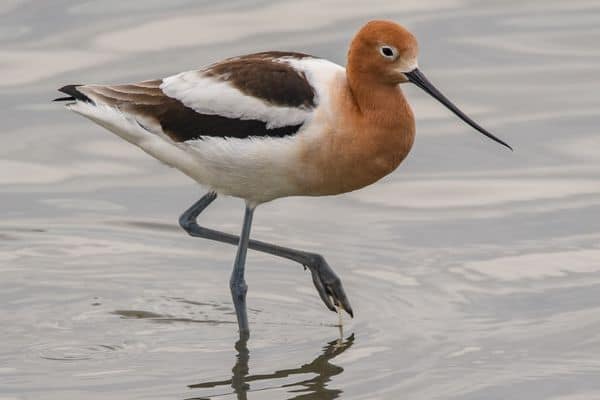
The American Avocet is a striking bird known for its distinct appearance. It features a slender body with long legs and a slightly upturned bill. The avocet showcases a contrasting black and white plumage, with the head and neck displaying cinnamon tones during breeding season.
On average, it measures around 16-20 inches in length, making it a medium-sized wader in the bird kingdom. Its unique and elegant appearance sets it apart as a remarkable species.
Diet
The American Avocet has a diverse and adaptable diet. As a wading bird, it primarily feeds on aquatic invertebrates such as insects, crustaceans, and small mollusks. It uses its distinctive upturned bill to sweep through shallow water, capturing prey items with its sensitive bill tip.
The avocet also forages by probing into mud or silt to find hidden prey. Additionally, it may consume small fish and amphibians when available. The American Avocet’s flexible feeding habits allow it to thrive in various wetland habitats across its range.
Nesting
The American Avocet engages in fascinating nesting behaviors. It typically forms breeding colonies in shallow wetland areas, often in close proximity to other avocets and waterbirds. The nests are shallow depressions on the ground, lined with grasses, twigs, and other plant materials. Both male and female avocets participate in building the nest.
Once the nest is ready, the female lays a clutch of 3-4 eggs, which are pale green or buff in color with dark speckles. The parents take turns incubating the eggs for about 22-28 days until they hatch. After the chicks emerge, they are precocial, meaning they are able to leave the nest and feed themselves shortly after hatching.
The avocet parents are diligent and protective, guiding their young and providing them with food. They employ distraction displays and vocalizations to deter potential predators from approaching the nest or chicks. The young avocets grow rapidly and gain their flight feathers within a month, becoming independent and ready to venture out into the wetlands.
Behavior

The American Avocet exhibits intriguing and captivating behavior. These birds are known for their graceful movements and elegant displays. One notable behavior is their feeding technique.
American Avocets employ a unique method called “scything.” They sweep their upturned bills side to side through shallow water, skillfully capturing small invertebrates and crustaceans. This efficient foraging method allows them to sift through the muddy substrate and secure their prey.
In addition to their feeding behavior, American Avocets are highly social birds. They often form large flocks and can be seen foraging together in shallow wetlands.
Within these flocks, they engage in social interactions, such as coordinated group movements or synchronized feeding behaviors. They also communicate through a variety of vocalizations, including soft calls and distinctive alarm calls when potential threats are detected.
During the breeding season, American Avocets exhibit remarkable displays to attract mates and establish territories. They engage in elaborate courtship rituals, which involve performing elegant and synchronized movements, such as head bobbing, wing flapping, and bill touching. These displays not only serve to attract a mate but also to establish a strong bond between pairs.
Both male and female avocets participate in constructing the nest and taking turns incubating the eggs. They are attentive and protective parents, engaging in distraction displays and vocalizations to deter potential threats from approaching the nest or chicks.
Habitat
The American Avocet is primarily found in North America, inhabiting a range of wetland habitats. These habitats include shallow saline or freshwater marshes, mudflats, coastal lagoons, and brackish estuaries. The avocets show a preference for areas with shallow water and mud flats, where they can easily forage for their invertebrate prey.
These birds are often seen in open habitats with low vegetation, which allows for unobstructed foraging and better visibility. They are adaptable and can thrive in a variety of wetland environments, including salt pans, alkaline lakes, and ephemeral wetlands. During the breeding season, they seek out nesting sites in marshes and wet meadows near water bodies.
American Avocets are migratory birds, and their habitat changes throughout the year. They breed in the northern parts of their range, including the Great Plains, western United States, and western Canada. During the non-breeding season, they can be found along the Gulf Coast, southern California, Mexico, and Central America.
Range
According to the Hawaii Biological Survey, the American Avocet is a non-breeding visitor and vagrant in Hawaii. While it is typically found in North America, it has been known to make occasional appearances in Hawaii, particularly on the islands of Maui. However, it does not have an established range in the state.
Conservation Status
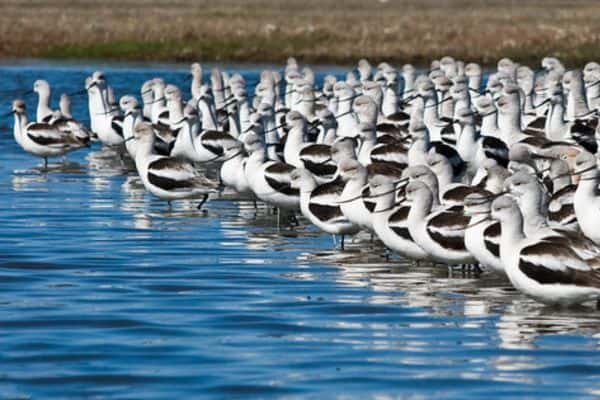
The American Avocet is currently classified as a species of least concern on the IUCN Red List of Threatened Species. While specific population numbers are not readily available, the overall population of American Avocets appears to be stable.
Conservation efforts have been focused on protecting and managing their wetland habitats, as these areas are crucial for their survival. Wetland conservation initiatives aim to maintain suitable nesting sites, provide sufficient food sources, and ensure the availability of undisturbed areas for their breeding and migratory needs.
Although the American Avocet is not facing significant threats at present, potential concerns include habitat loss due to urban development, pollution of wetland ecosystems, and disturbance caused by human activities. Climate change and its associated impacts, such as sea-level rise and altered precipitation patterns, could also affect their habitats in the long term.
Interesting Facts
1. Upside-Down feeding
The avocet uses its unique bill to sweep through shallow water in a scything motion, capturing small invertebrates and crustaceans. This feeding behavior is often done with its bill partially submerged and upside down.
2. Stunning breeding plumage
During the breeding season, adult American Avocets display cinnamon-colored heads and necks, contrasting with their black and white bodies. This temporary color change enhances their appearance for courtship displays.
3. Distinct courtship displays
Avocets engage in elaborate courtship displays, including synchronized wing flapping, head bobbing, and bill touching. These displays serve to attract mates and strengthen pair bonds.
4. Long-distance migrants
American Avocets are migratory birds, traveling long distances between their breeding grounds in the northern parts of North America and their wintering grounds along the southern coasts of the United States and Mexico.
Frequently Asked Questions
1. Are American Avocets social birds?
Yes, American Avocets often form large flocks, especially during migration and in wintering areas. They can be seen foraging and socializing together in shallow wetlands.
2. What is the American Avocet’s nesting behavior?
American Avocets form breeding colonies and construct nests on the ground. Both male and female avocets participate in building the nests and share incubation duties.
3. What is the lifespan of an American Avocet?
The average lifespan of an American Avocet in the wild is around 7-10 years. However, with proper conditions and protection, they can live longer.
4. How do American Avocets communicate with each other?
American Avocets communicate through a variety of vocalizations, including soft calls and alarm calls. They use these vocalizations to communicate with their flock members and to alert others of potential dangers.
